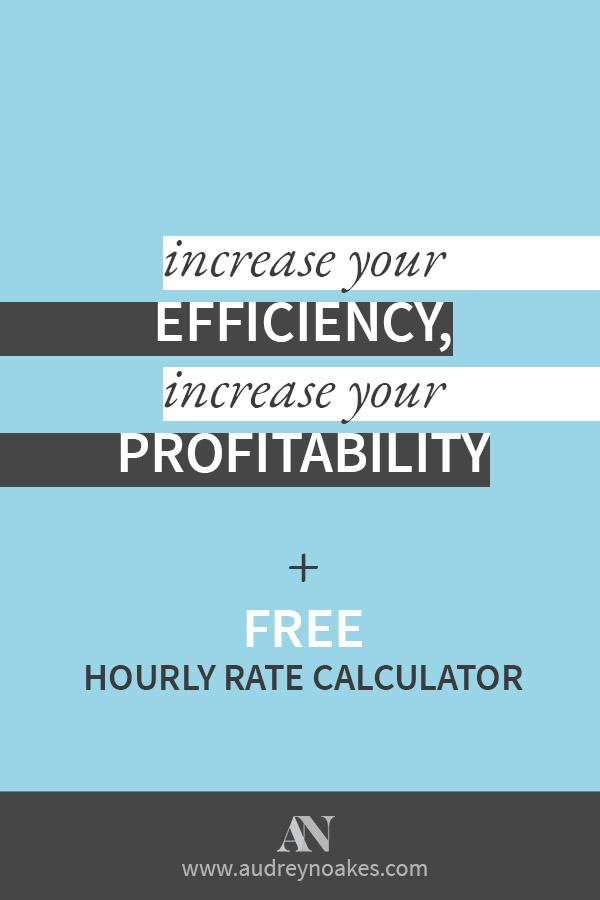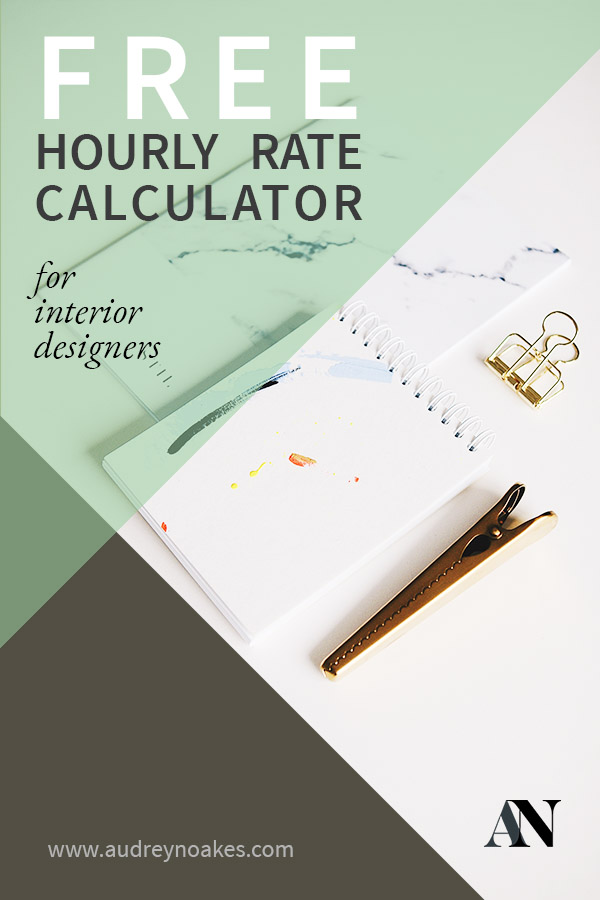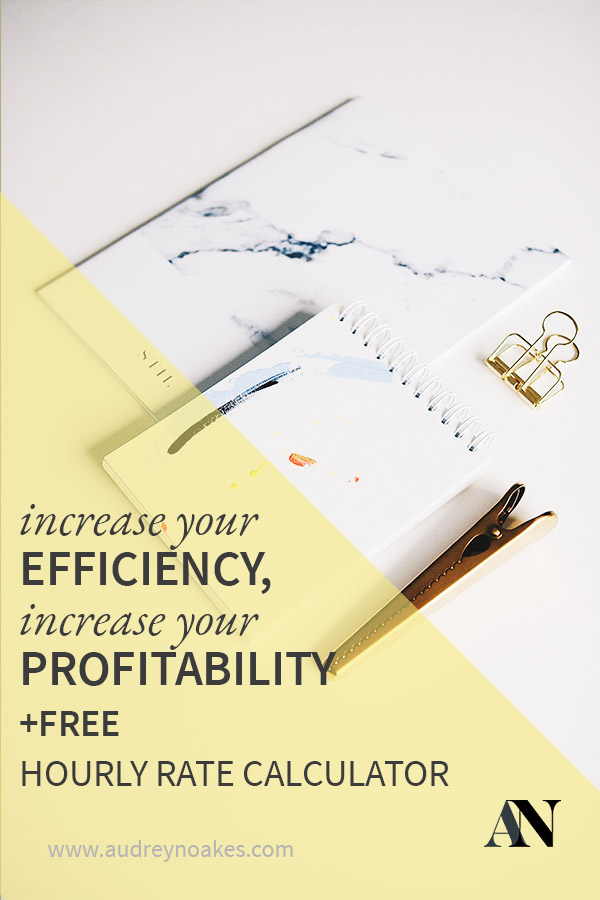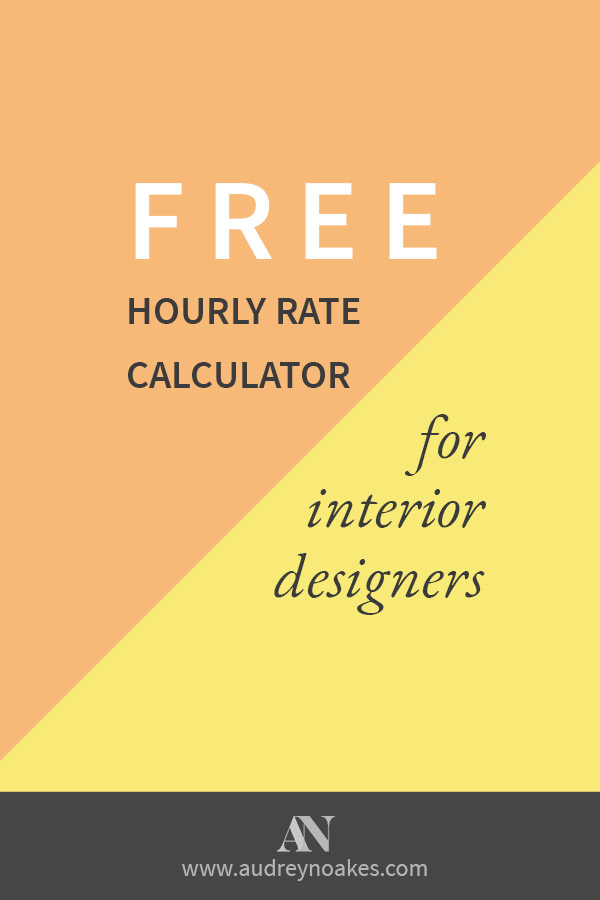Increase your efficiency, increase your profitability.
(If you hear that in the same whisper that says ‘If you build it, they will come’, great, because that’s exactly how I intended it).
Building your digital skills as an interior designer is really all about increasing your efficiency. If you can increase your efficiency, you can also increase your profitability. I see way too many designers, especially new designers, charging flat fees for projects that take them far too many hours to complete. To ensure you are really charging your worth for design fees, it’s important to understand what your hourly rate is. That’s where this blog post comes in.
I’ve created a FREE hourly rate calculator spreadsheet if you want to do this the easy way. But if you’d rather do it yourself, stay with me, and I’ll get to that below.
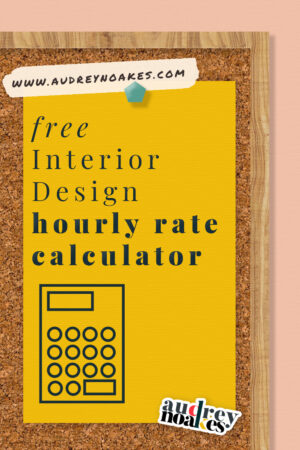
want your free hourly rate calculator?
With a good understanding of your hourly rate, you can figure out more suitable rates for your flat fees and packages. When you improve your efficiency as a designer (by developing the digital skills that I love to teach), you can actually become more profitable on these projects.
For example, think about that flat fee you charge for a simple project based on 20 hours of work. When you improve your efficiency though, those projects might actually take you half that time. Suddenly, your improved efficiency is actually increasing your profitability making this rewarding career a lucrative one. With efficiency, you can effectively double your hourly rate.
Now to calculate your hourly rate:
PART 1:
First, think about how much money you want to make in a year.
I’m a big believer in goal setting, so aim high if you want.
Second, determine how many days a week you’ll work.
If you’re doing design work along the side of other responsibilities you might not be working at it full time. That’s ok. Just write down the number of days in a week you plan to work.
Third, determine how many hours in a day you’ll work.
Maybe you work all week but take half days, maybe you only work a few days a week but their full-on. Write down the number of hours you plan to work each day.
Now multiply the number of days you plan to work each week by the number of hours you plan to work each week to give yourself the number of working hours per week.
WORKING DAYS PER WEEK X WORKING HOURS PER DAY
PART 2:
Determine what percentage of your working hours are billable to a client and what percentage are you working on more administrative tasks.
We all know that you’re not going to be able to charge a client for your time 100% of the time. What about that time you spend responding to enquiry emails, marketing your business, how will you get paid for that time you’re working? You consider it when you’re determining you hourly rate.
Now multiple the percentage of billable working hours by the number of total working hours, to give you a an idea of how many billable hours you’ll have in a week.
% OF BILLABLE WORKING HOURS X WORKING HOURS PER WEEK
PART 3:
Please, please, please give yourself some time off.
No one should be working full-time 52 weeks a year. Make sure you allocate yourself some time to take off. Give yourself paid vacation. This will let you determine your working weeks in a year.
52 WEEKS IN A YEAR MINUS NUMBER OF WEEKS OF VACATION/HOLIDAY
Now, multiply your billable hours per week by the number of working hours per year. This will determine your billable hours per year.
BILLABLE HOURS PER WEEK X WORKING HOURS PER YEAR
DRUMROLL…
Now to get your hourly rate, all you need to due is divide your Annual Salary by the number of billable hours per year.
ANNUAL SALARY DIVIDED BY NUMBER OF BILLABLE HOURS PER YEAR
EQUALS?
What number did you come up with?

want your free hourly rate calculator?
Again, I’ve made a free calculator spreadsheet that will help you do all this calculation plus help you consider taxes and expenses to help you determine your take home pay.
Really think about the number you’ve come up. Think about how long you spend on the tasks for your projects. Can you work more efficiently? Can those gains in time-saved be increases in your profits?
Let’s think about what this hourly rate might mean if you use it to develop a price for a design package.
Example:
Your hourly rate is £50/hr. One of your design packages you estimate to take 30 hours to fully complete. Therefore, you price that package at £1,500.
Now think about how you might speed up your design process, improve your digital skills, and work more efficiently. If this same package suddenly takes you only 15 hours to complete, suddenly your package fee will give you a gain of £750.
Instead of one £1,500 package being completed over 30 hours, you could likely complete two £1,500 packages in that 30 hours. You’ve just effectively increased your hourly rate just by improving your efficiency. So would building your digital skills be worth it you?
Hopefully this gives you some idea of the real value efficiency can be in a design project.
How do you plan to increase your efficiency?
Til next time,
Audrey
PS. If you charge with package prices, you can use the second tab in this spreadsheet to help you determine your package prices and to start to think about how an increased efficiency can lead you to more profitable packages.
